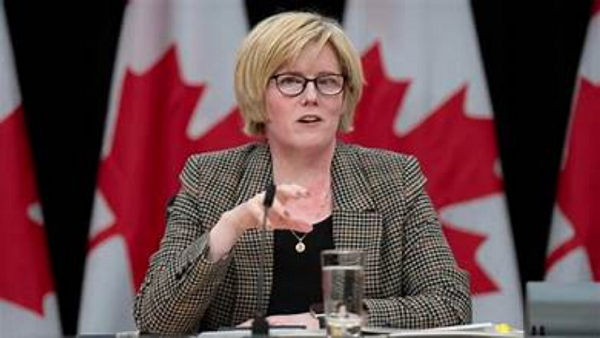Private sector pay doubled public sector on gender and immigration basis
The gender and immigration pay gap is twice as big in the private sector than in the public sector, according to a report by the Canadian Centre for Policy Alternatives released Wednesday.
In the private sector, men make 10 per cent more than women but in the public sector, the gender pay gap is only five per cent, according to the report, which uses data from the 2023 Labour Force Survey and adjusts for 15 common factors including gender, education, tenure and industry.
“Put another way, women in public sector make four per cent more than women in private sector,” the report said.
The wage gap also has significant impacts on newcomers. In the private sector, immigrants who have been in Canada for more than a decade are paid eight per cent less than Canadian-born workers. On the other hand, the public sector paid newcomers three per cent less than private sector Canadian-born workers in 2023.
The gender wage ratio — a measure of how much females earn per hour relative to their male counterparts — has not improved in Ontario over the past decade, hovering around 87 cents, a report from Financial Accountability Office of Ontario found in May. Meanwhile, the annual wage gap between newcomers and the total population over nearly four decades only narrowed to $6,200 in 2019 from $10,700 in 1982, according to another report from the Financial Accountability Office of Ontario published in November.
However, the gender and immigration pay gap is smaller in the public sector “in part because discrimination isn’t as bad as it is in the private sector,” said David Macdonald, a senior economist with the Canadian Centre for Policy Alternatives, who authored the report.
Another major reason for the narrower gap is because of “wage compression,” Macdonald added.
“The public sector is better at reducing the pay gap because it lifts pay for workers at the bottom of the income spectrum — who tend to be women and immigrants — and it constrains pay for those at the top of the income spectrum — who tend to be men and executives
This also means men’s wages are lower in the public sector, explained Macdonald.
“Men are actually paid less in the public sector than they are in the private sector,” he said.
The narrower gender pay gap in the public sector is most apparent for lower-paid workers, according to the report.
Middle- to middle-low-income earning women in the public sector who earn around $20 to $30 an hour achieve pay equity, Macdonald said.
This means they are paid roughly the same as similarly qualified men in both the public and private sectors, “which is very unusual across the spectrum of pay in Canada,” he added.
Wage gaps can also be seen across occupations. High-earning senior managers in the public sector, for example, are paid nearly 30 per cent less than in the private sector.
“The public sector manages to keep these pay levels constrained,” Macdonald said. “You just don’t see $15-million bonuses in the public sector like you do on Bay Street.”
On the other hand, there are jobs where workers are paid more in the public sector.
Educators at all levels — primary and secondary, university and colleges — are paid 14 per cent more than in the private sector. Social workers and counsellors in the public sector are also paid 20 per cent more than in the private sector — occupations that often employ more women, the report said.
While the public sector still has work to do in terms of discriminatory pay gaps, “it reduces them,” Macdonald said. “And particularly for lower-paid women, it does eliminate them.”
But both private and public sectors still have work to do, according to Macdonald.
“These are very substantial pay gaps that continue to exist,” he said.
“Capping the extreme pay for dentists, doctors and execs — and using this to produce less wage discrimination for equally qualified women and new Canadians — reduces wage inequality in the public sector.”
This article was reported by The Star
















